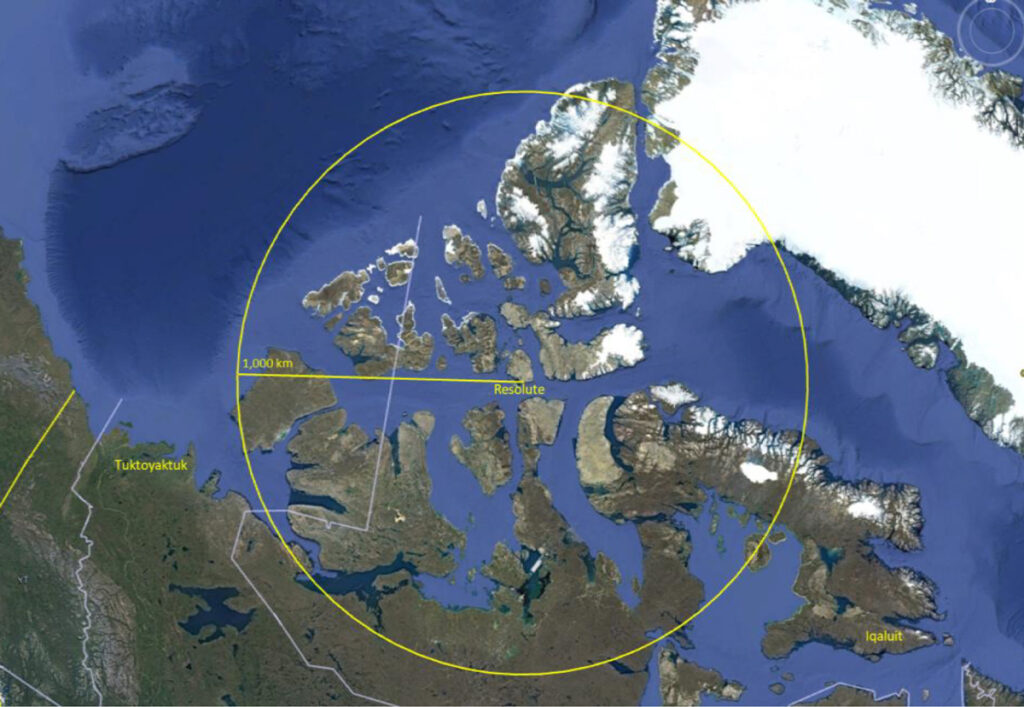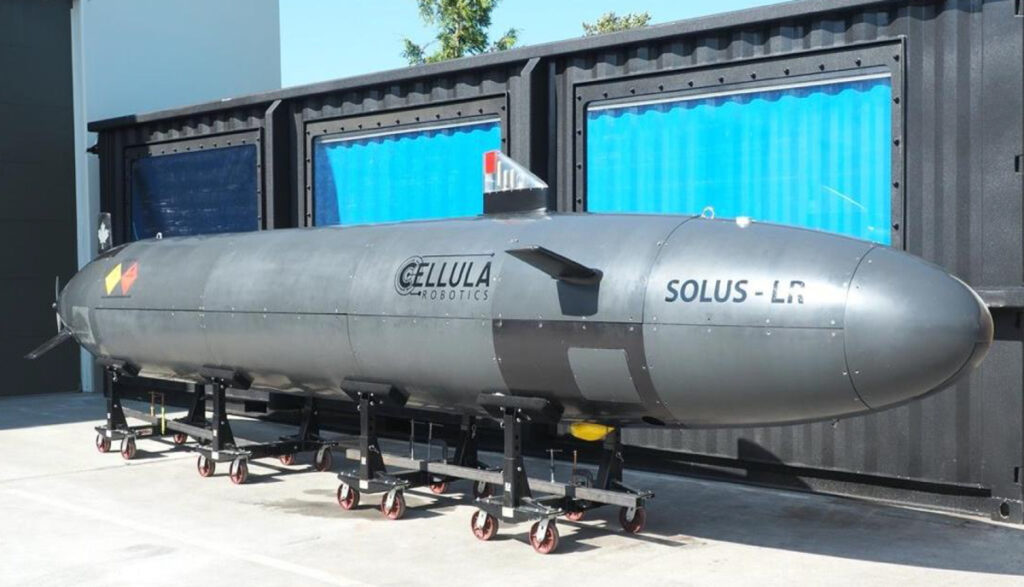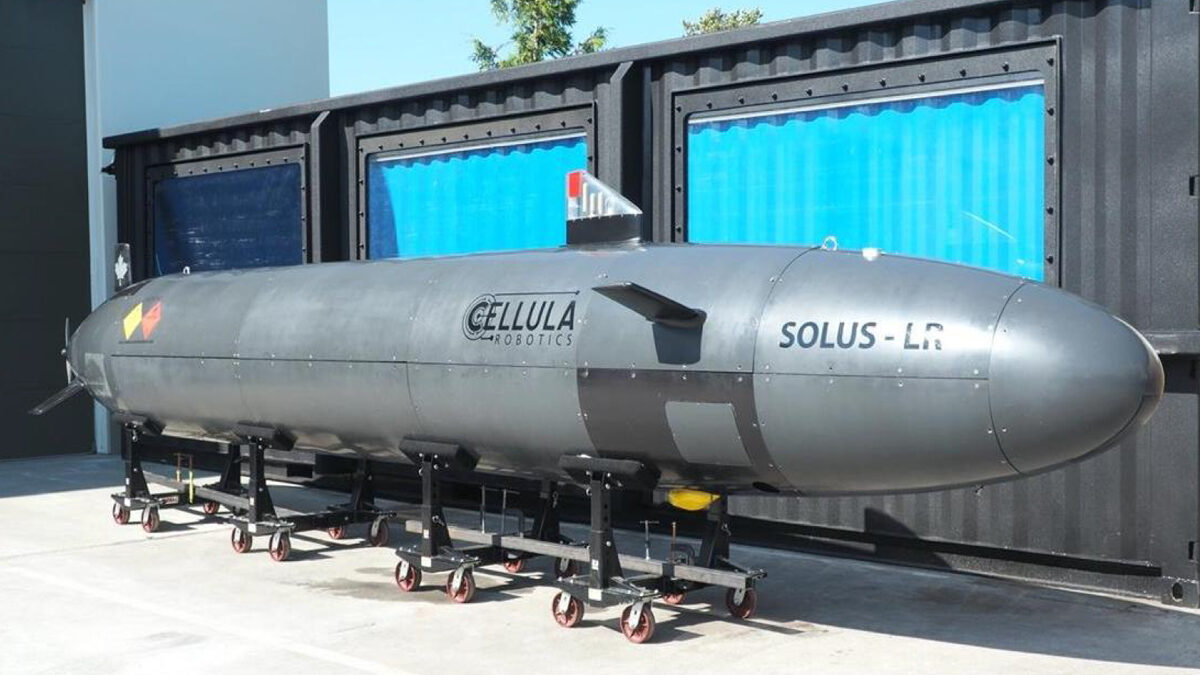Part I: The Need and Capability Gap
The recent report by the Auditor General of Canada highlighted the changing Arctic environment and the implications for better surveillance of the Canadian Arctic1. The report emphasized the changing conditions in the Arctic due to climate change that have made it easier for commercial ships, tourist operators and foreign government and military vessels to access the Arctic.
The Canadian High North Arctic Archipelago is a vast area covering approximately 1.4 million square kilometres and comprises about 50% of the coastline of Canada. This region is covered by ice for large portions of the year and the area’s gulfs, channels, inlets, and straits create complex navigational and monitoring challenges.
With minimal persistent surveillance, foreign submarines and other subsea systems can travel through or perch inside Canada’s territorial water without detection. To develop a credible deterrent, Canada must be able to detect, track, shape, and interdict an adversary to prevent unauthorized incursions in the area.
Countering submarines in the ocean or even in littoral regions requires a combination of submarines, surface vessels, seafloor sensors, airborne assets, and increasingly uncrewed vessels both surface and sub-surface. Even though the Arctic is warming, ice coverage persists in large areas throughout the year restricting access to Canada’s internal waters in the Arctic Archipelago. Canada’s existing resources in the region do not provide for subsurface monitoring or surveillance operations; consequently, Canada would not be in a position to detect, monitor or prevent an incursion.
Canada’s four Victoria class SSKs are ill-suited for under-ice work due to their limited submerged duration and availability, but they could provide an effective interdiction capability at the ice edge if required. The new Arctic Offshore Patrol Ships provide limited seasonal coverage through first year ice. The two new Polar class icebreakers will improve year-round access to the region, but icebreaking will diminish a vessel’s ability to conduct effective ASW operations because of radiated noise. The Arctic is vast, and the number of ships available is inadequate to monitor the area.
The Defence Research and Development Canada (DRDC) Northern Watch Technology Demonstration project was designed to investigate technologies to monitor activity at several key Arctic chokepoints2. The project that lasted more than eight years was considered a success, but it did demonstrate some major issues associated with establishing permanent surveillance in the Arctic such as problems with installation, ice conditions, technical challenges, and data management.
Substantial capital investment is required to procure submarines, ice breakers, and fixed cable arrays to provide continuous sub-surface surveillance in the high Arctic region. These costly assets have extended procurement cycles and are complex to operate with significant operational overhead that continues for the vessel’s life.
Part II: The Solution
Long-Range AUV Fleets
This paper proposes a number of fleets of coordinated Long-Range AUV (LRAUV) systems for a cost-effective, persistent, and integrated system for wide-area surveillance. For the purpose of this paper, long-range is considered to be at least two thousand kilometers.

Image: Google (2023) Resolute Bay. Available at: https://maps.app.goo.gl/cGu9gWf6CfYNJyy5A (Accessed: May 2023).
Northern Deployment
Long-range AUVs can operate from remote bases with minimal infrastructure and are well suited for deployment from Canada’s Arctic communities. By collaborating with local communities and companies, missions can be developed and supported with the benefit and insight of extensive local knowledge that will be critical for the long-term success of the program. In return, training, skilled jobs, and infrastructure will be developed. The LRAUV surveillance program will also provide the opportunity to provide much needed environmental monitoring & hydrographic survey.
Strength in Numbers
With autonomous control, tens to hundreds of LRAUVs can be deployed, providing continuous coverage of maritime choke points and roaming patrols. A fleet of hundreds would provide the level of coverage of Canada’s vast northern coastlines needed to maintain comprehensive situational awareness at a considerably reduced cost than traditional crewed systems.
A fleet can offer flexible observational capabilities to meet evolving mission requirements. Each system can be configured to address specific monitoring and surveillance requests as identified.
When the LRAUVs operate in a coordinated or swarming configuration, these assets become force multipliers for other surveillance installations.
Manufacturing AUVs in the volume required for the envisaged fleet deployments will dramatically reduce the cost per unit and will also improve system availability and reliability.
Surveillance, Intelligence, and Data Collection
The primary payload is a winch deployed, thin-line towed array for acoustic target detection. Autonomous control systems will be used to reduce ambiguities, either through orthogonal maneuvers or in collaboration with another fleet LRAUV. Advanced algorithms will be used to classify the target and determine the appropriate action.
A payload delivery bay allows for the deployment of auxiliary listening stations on the seafloor in targeted locations.
Command & Control
Due to the inherent challenges with underwater communications, LRAUVs should be employed as a semi-independent fleet operating from a centralized Command and Control (C2) center.
Depending on the mission and message urgency, a range of communications methods are available including real time via the thin line array and sound projector for low data rates, but very long range to optical high bandwidth and short range. With LRAUVs co-located in a fleet, messages can be transmitted via multi-hop relaying transmitting from one AUV to another or via deployable seafloor nodes to a C2 gateway (such as a through ice buoy, seafloor cabled senor or surface ship).
However, when near-real time communication to C2 is not available or not desirable, autonomy enables the LRAUVs to decide on the appropriate response based on programmed behaviours, rules and priorities that can provide effects such as battlespace shaping.
Part III – Canada’s Development Program
Solus-LR
In 2017, Cellula successfully responded to a challenge-based call for proposals to develop a long-range, fuel cell-powered AUV, now known as Solus-LR. The challenge was released as part of Canada’s All Domain Situational Awareness (ADSA) Science and Technology (S&T) Program, run by DRDC.
Solus-LR is designed for 2,000 km submerged missions in its current configuration and is currently undertaking a range of sea trials. The system has successfully logged over 150 days at sea during the initial development phase.
The Solus-LR fuel cell is hydrogen-based: a high-efficiency green fuel. The Hydrogen and Oxygen fuel can be generated as required in the Arctic using a containerized electrolysis system powered by renewable energy.

Arctic Pilot
The prototype Solus-LR has proven that fuel cell powered AUV’s provide a compelling long-range capability that can be a core element of Canada’s future Arctic surveillance program.
The pilot program will build three, second generation Solus-LR AUVs, building on the current design with incremental improvements on the fuel cell and system reliability. Each Solus-LR will be fitted with a winch deployed thin-line array with the autonomy detection algorithm and behaviours developed in parallel.
Environmental and bathymetric sonars will provide benefit for a whole-of-government engagement with a local approach to Arctic operations.
Over 24 months, this pilot program will not just build and test the AUVs, but will partner with northern communities and companies to establish the logistics, training and operations bases for launch, recovery, and maintenance in the Arctic. The pilot program will also be used to develop standard operating procedures, system management processes and water space management to integrate this new capability into Canada’s maritime C2 centers.
The subsequent demonstration will culminate in a continuous, six month at-sea capability in the Arctic with one AUV on mission, one in transit and one in maintenance / training.
Following the pilot program, Canada will be able to deploy fleets of LRAUVs at scale by 2026, providing extensive surveillance, year-round and under ice throughout the Arctic Archipelago
References
1 Auditor General of Canada Report 6 -Arctic Surveillance, November 2022. Ottawa: Auditor General of Canada Annual Reports
2 DRDC, “Overview of the technical results of the Northern Watch Project,” DRDC Scientific Report, June 2016.

